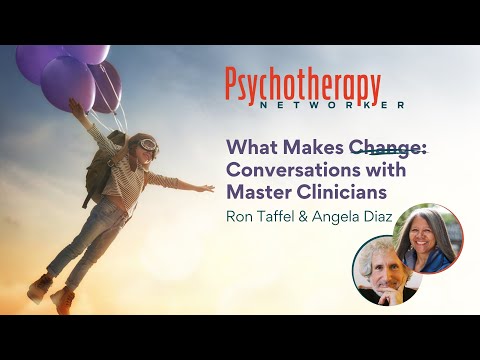Since time immemorial, our pets have kept us company and provided us with a deep sense of calm. In effect, they’ve been our friends. But only in the last few decades have they begun doubling as emotional support animals (ESAs), able to join us in plane cabins, college dorm rooms, pet-free apartment buildings, and even restaurants.
The national news stories about this new designation were charming and funny at first. We heard accounts from baffled staff and customers at a Wisconsin McDonald’s who witnessed an emotional support kangaroo, smartly dressed and tucked into a baby carrier, accompany its owner to order a meal. Then came viral footage of an emotional support peacock, its plumage long as a royal veil, perched atop its owner as she navigated an airport terminal to catch a flight. We heard about emotional support snakes, llamas, hamsters, chickens.
Therapist Jessica Kwerel, who specializes in pet grief counseling for clients, has a bird’s-eye view of the ways pets are not only deeply therapeutic but essential companions for many of us. “Pets have an amazing capacity to contain us. They can make us feel physically and emotionally held, and the shared oxytocin from that closeness creates a powerful bond. Your brain doesn’t differentiate between fur and skin,” Kwerel emphasizes. “Your head knows this is an animal, but your heart knows secure, loving attachment.”
Beyond this kind of healing love, ESAs can provide an essential form of coregulation, especially for people with PTSD, depression, and anxiety. Take the case of Daniel, an adorable, well-behaved duck with a Captain America diaper and red shoes, who became a media darling for charming the crew and passengers on two connecting flights that he took with his owner from Milwaukee to Asheville. The owner was recovering after a bad accident and told the press that Daniel was good at putting his feet on her chest when he sensed a panic attack coming on. Her doctor’s ESA letter said Daniel was an “integral part” of her treatment for PTSD.
ESAs may not be certified by the Americans with Disabilities Act, but they were formally recognized by the Air Carrier Access Act and the Fair Housing Act as a “reasonable accommodation for a person with a disability.” Kwerel is often asked to write ESA accommodation letters, but she has a few conditions before agreeing. “I only write letters for clients I’ve seen before, not for ones who just reach out for a letter,” she says. “I’m happy to write an ESA letter as long as I’m not signing off on excessively large or exotic animals, and the animal is well socialized, doesn’t have a bite history, and is up to date on vaccinations.”
In late 2020, the U.S. Department of Transportation revised its Air Carrier Access Act and no longer requires airlines to accept ESAs. Since 2021, some airlines have updated their ESA policies to specify that if the animals are brought into cabins, they must travel the same way as other pets: in carry-on containers that fit under the seat.
Despite these changes and the swirl of mixed publicity around ESAs, plenty of practitioners whose clients come to them with an ESA request still feel positive about providing a letter. Others, like Lynn Lyons, a popular anxiety specialist, have concerns.
“I’m a huge believer in the joy and connection we receive from animals,” Lyons says. “I invite families to bring their pets to therapy. And service animals—which are not ESAs—are astounding in what they provide. But I think there’s a risk when we take something that so inherently enriches us and define it as treatment. Anxiety is always on the lookout for external ‘things’ to create certainty and comfort. Animals, substances, water bottles, rituals, even other people—they can all be hijacked by anxiety disorders to become safety behaviors or crutches: requirements for someone to function. Unfortunately, the use of safety behaviors is commonly prescribed by schools and even clinicians. But what internal skills are we building when we give the disorder exactly what it commands?”
APA’s practice organization emphasizes that ESA letters should be limited to exact need, like flying for a specific trip or moving into a specific apartment. It cautions practitioners that they should be willing to back up what they’ve said in the letter in case an incident with the animal winds up in court. Finally, therapists need to make sure the client understands that the evaluation or assessment for the need of an ESA may result in a diagnosis that could affect them later, like when applying for life insurance or a job.
Regardless of how the ESA controversy continues to play out, Kwerel emphasizes that humans should feel safe in the knowledge that the sense of connection and safety our animals provide is real—and it’s mutual. “They’re a positive, loving part of our world,” she says, “because we are their world. They’re meeting our needs as we’re meeting theirs.” Isn’t that true friendship, after all?
Photo by Lum3n/Pexels
Lauren Dockett
Lauren Dockett, MS, is the senior writer at Psychotherapy Networker. A longtime journalist, journalism lecturer, and book and magazine editor, she’s also a former caseworker taken with the complexity of mental health, who finds the ongoing evolution of the therapy field and its broadening reach an engrossing story. Prior to the Networker, she contributed to many outlets, including The Washington Post, NPR, and Salon. Her books include Facing 30, Sex Talk, and The Deepest Blue. Visit her website at laurendockett.com.












